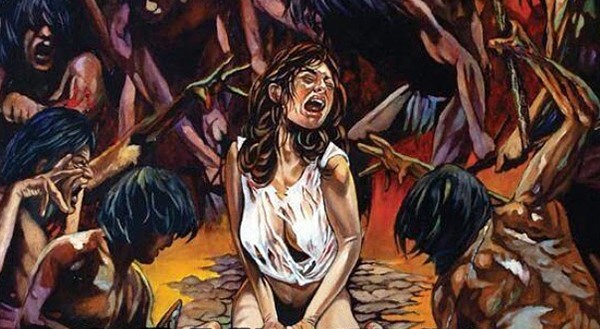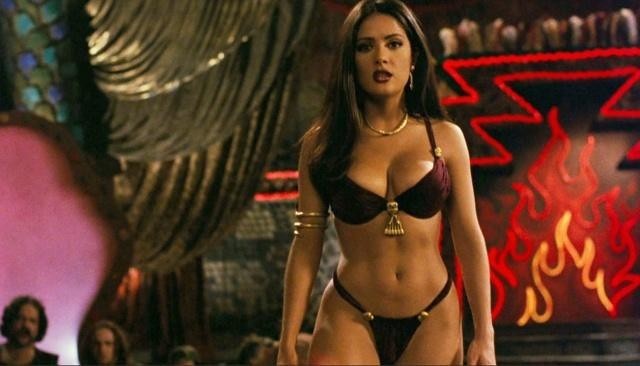Most people know Alicia Silverstone from her roles in Clueless, Batman & Robin and the early 90s Aerosmith music videos. Silverstone is exploring new territory in her latest thriller The Requin. Hitting theaters, On-Demand and Digital January 28th, the film’s official synopsis reads: There’s terror in paradise when Jaelyn (Silverstone) and Kyle (James Tupper) arrive at a remote seaside villa in Vietnam for a romantic getaway. A torrential storm descends, reducing the villa to little more than a raft and sweeping the young couple out to sea. Suddenly, another danger appears: a school of great white sharks. With her injured husband watching helplessly, Jaelyn must battle the deadly predators alone in this tense thriller that rides an unrelenting wave of fear. Adding to this action-packed ride is the cinematography by Matt S. Bell, whom is no stranger to terrifying shark films, he has worked on many, including Syfy’s Santa Jaws. To learn more about the film’s cinematography, we spoke to Matt exclusively. In the below Q&A, he discusses everything from working with director Le-Van Kiet to being a traveling DP.
How did you initially get involved with The Requin?
Producer Aaron Koontz reached out to me about 1 month out from their scheduled start date. I was just coming off a 3 picture deal out of Louisiana and was searching for some downtime, however when Aaron told me he had an Alicia Silverstone water survival film I jumped on the opportunity. I packed up my house (I live in an RV) and headed over to Orlando the day after wrapping my previous films.
I imagine there was a lot of pre-production involved in The Requin, because from the trailer, there looks to be some very grand scenes. Did you story board everything out?
The film was very big for budget, that is for sure — but they always are. I had just about 1 month of onsite pre-production for this film. When I showed up, Kiet (director), had a fair bit of the bigger action sequences storyboarded out. Since the film is about 95% CGI, most of our prep efforts went into storyboarding the most complex action sequences — IE the storm surge, the boat sequences and the main shark attack.
Can you talk about working with director Le-Van Kiet. What did your working relationship look like with him?
The Requin was the first time Kiet and I both met and worked together. We had a 2-hour phone conversation prior to our meeting in Orlando, then it was off to the races. I had a great time working with Kiet overall. Working during the height of COVID was a strain on all of us. Considering those conditions and limitations, Kiet knew exactly what he wanted and which direction to send the film. Kiet put a lot of the photography decisions on me and my team, which is my preferred way of working on a tight schedule.
Le-Van Kiet is a Vietnamese-born filmmaker, whom has had great success both in Vietnam and the U.S. How was his approach to filmmaking different from other directors you have worked with?
Like most great director’s, Kiet knows how to adjust his delegation and communication to fit the situation. I think this, amongst other things, is what has led to his successes. Kiet concentrates on leading the ship by delegating an appropriate amount of the creative choices onto his creative collaborators. Releasing that amount of creative control is a tough place for most directors to get, understandably. Kiet is also a very clear and concise communicator during prep which is the only way to achieve a film like this. Everyone knew what we were trying to achieve every day.
What would you say was the most complicated shot to film? Why was it so challenging?
There wasn’t much about this shoot that wasn’t extremely difficult, to be honest. Anytime a production films on water, the scope of the project triples. Filming in an exposed, private pool with our set pieces was probably the biggest daily hurdle – mostly due to weather. Fighting the harsh winds and afternoons thunderstorms of Florida aren’t easy tasks for anyone.
The main storm sequence was the most creatively difficult sequence to shoot. Even though we were on a stage for this work, the massive amount of effort it takes to set up each individual angle was still daunting on our fast-paced schedule. The art, special effects and stunt teams did an amazing job creating the ambience needed to sell that sequence.
A big story point in the film involves an ominous shark, which we heard was created with both animatronics and CGI. When CGI is used, what is that lighting process like because you can’t see it in person?
This was the coolest part of the shoot for me. I love practical – especially animated – elements.
Our special effects and art teams created several variations of shark elements to be used in the film. The biggest and coolest of which was a fully animatronic great white shark. Originally, we planned to use this build for practical purposes in the water, however it became clear that we would have to shoot this element on green screen dry. For those sequences, I lit globally for what the VFX team would need to place the practical element in the scene. Globally means that I took as much contrast out of those elements as possible so the post team can add the necessary levels to match the scene the element was being used for.
Filming for CGI is very difficult, especially when most of the film depends on it. For our purposes, it was nice having the physical shark references on set so we could get a sense of scale and look while filming the foreground action. However, for most of the weather sequences we had only our imaginations. Kiet did a great job of communicating his vision during prep and principal production to ensure the entire team was on the same page.
Is there anything you would like to tell audiences about The Requin, that they might not know from watching the film?
Both Alicia and James are delightful collaborators!
You also worked on another shark film for Sony, Santa Jaws. How was The Requin shoot different than that film’s shoot? Were there any major similarities?
The beautiful thing about filmmaking is that no two projects are anything alike. Even though both films had a variety of difficulties, I’d be hard press to find similarities between them. I’d say the most quantifiable difference is that Santa Jaws was structured for network television, therefore the editorial process was structured for that delivery method. The primary difference being the 9-act structure that allows for commercial breaks, which dictates the amount of coverage needed. This comes with its own set of problems and considerations. It’s a different mental approach all together.
We heard that you like to call yourself a traveling DP, because you live and travel out of an RV. Can you tell us how this came about?
I am a traveling DP as I spend most of my time living out of an RV and traveling around.
A little over 2 years ago, I decided I wanted to travel more. I was tired of leaving my apartment behind just to go live in a hotel for months at a time. It just made sense to get myself into an RV and it has been the best decision I ever made. Now when I leave for the next film, that new place just becomes a starting point for my next road trip.
Is there a specific director or showrunner you would like to work with one day? Why?
I’m excited to work with any passionate artists and interesting scripts that come across. If I am lucky, those passionate artists will see value in working with me too.
Thanks to Matt for taking the time to speak to us. You can learn more about him at http://www.mattsbell.com/.














